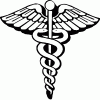Wanna Bite? Animal Venom as Medicine

Understandably, few people think of animal venom as anything other than a dangerous substance to be avoided at all costs. After all, at least 100,000 people die and more than 300,000 are permanently disabled every year from snake bites alone. However, a growing number of venoms are being found to have significant medical use.
In fact, there are several medicines currently on the market that are derived from animal venom — including diabetes drug Byetta (from Gila monster venom), high blood pressure drug Capoten (from Brazilian pit viper venom), painkiller Prialt (from cone snail venom), anti-blood clot drug Integrilin (from rattlesnake venom) and anti-platelet aggregation drug Aggrastat (from African saw-scaled viper venom).
Venom is so effective because it typically attacks the body’s blood flow and nervous system, two avenues that are also popular with diseases. So, a venom that, for instance, thins the blood can potentially break up blood clots that can lead to heart attacks and strokes.
The potential is so great for venom medicine that there’s a major initiative in Europe called Venomics whose goal is to analyze venoms for their medical potential and create a “bank” of 10,000 different venom-derived molecules that could potentially be developed into drugs. Research is necessary because of the estimated 43 million animal toxins in existence, we’ve studied only about 3,500.
Elsewhere, there are already clinical trials underway looking into the effectiveness of various venoms in the treatment of everything from cancer to muscular dystrophy, arthritis, Alzheimer’s disease, obesity and even erectile dysfunction.
Currently, there are only six venom-based medications approved by the FDA, but in addition to medicines, venom can also be used in the creation of antivenoms, a number of which have also received FDA approval. Antivenoms are antidotes to the toxins in venom whose molecules attach themselves to venom molecules and neutralize them. They can’t undo the damage already done (venoms, after all, seek to digest the prey’s tissue), but they can prevent any further damage to the body and more importantly, they can save lives.
(Sources: World Health Organization, Venomics, National Institutes of Health Office of Science Education, The Guardian, Popular Mechanics, Smithsonian Magazine, Huffington Post)







